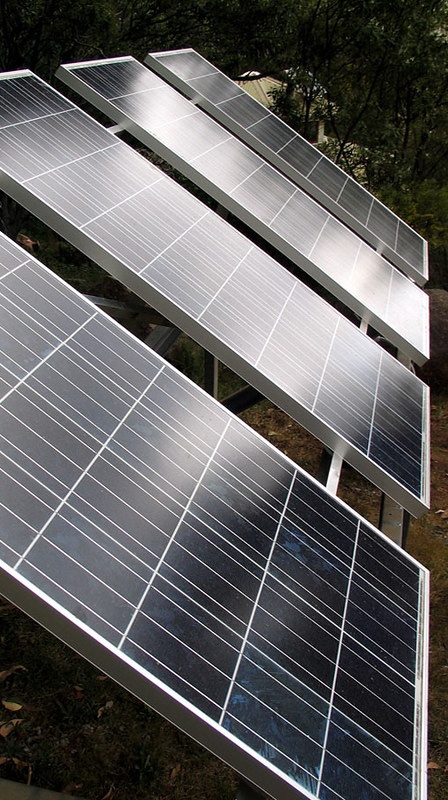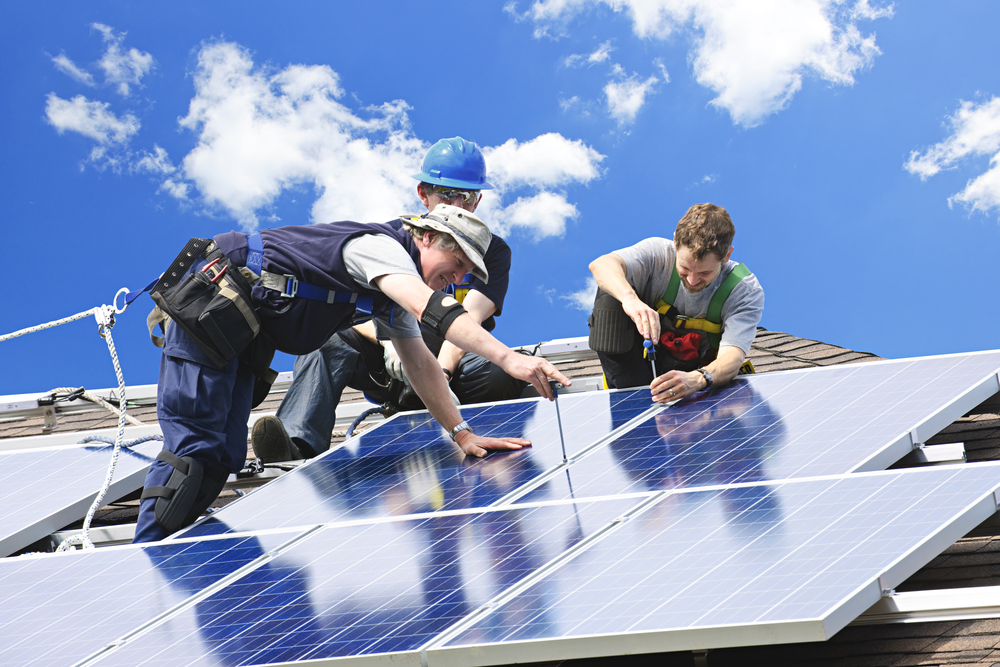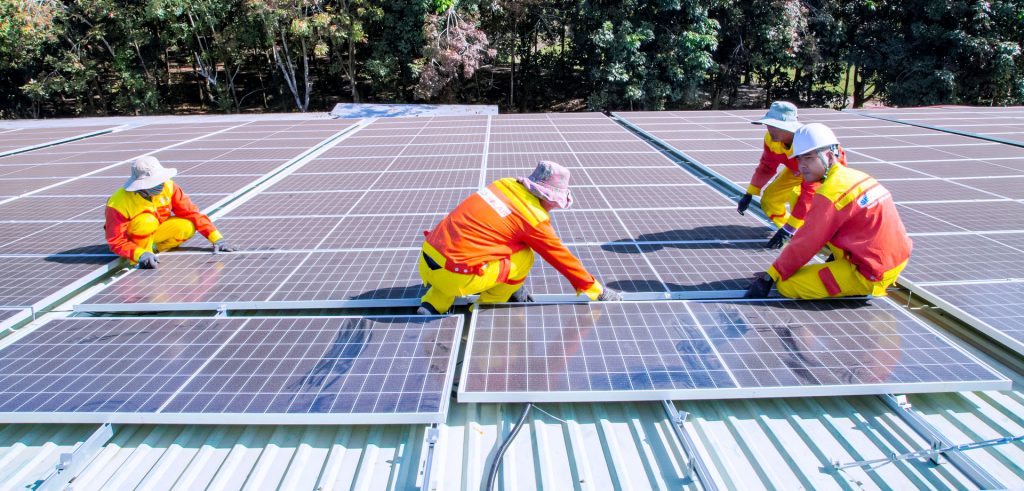Winterizing a solar panel system is an important part of preparing for colder weather and ensuring that the system continues to provide maximum energy output.
This article will discuss specific steps which should be taken in order to winterize a solar panel system, including protecting against snow damage, preventing water accumulation, and reducing heat loss. With these tips, individuals can ensure their solar panels are prepared for cold weather while also taking advantage of their full potential.
In addition to discussing ways to winterize one’s own solar panel system, this article will examine how components like racking systems and microinverters may need additional preparation before the onset of cold weather.
1. Protecting Against Snow Damage
Snowfall can cause significant damage to solar panel systems, but there are steps that homeowners can take to protect their system during winter.
The first step is adjusting the angle of the panels. Solar photovoltaic (PV) modules should be tilted away from horizontal surfaces when snow falls in order to reduce accumulation on the module surface and minimize shading effects caused by the snow cover. This will also help prevent ice buildup.
In addition to changing the tilt angle of PV modules, it is important for homeowners to keep their panels clear of accumulated snow or ice after a storm. Ice removal should be done carefully with soft brushes or plastic scrapers; metal tools should not be used as they may scratch the glass surface and reduce efficiency.
Homeowners should avoid walking on top of their solar array, as doing so could lead to breakage of wiring underneath or misalignment of mounting structures due to pressure changes.
2. Preventing Water Accumulation

It is important to take steps in order to winterize your solar panel system. One way of doing this is by preventing water accumulation on the system.
This can be achieved through securing seals, which should be checked regularly throughout the cold season and replaced if necessary.
In addition, adding coatings such as wax or lubrication materials will also help protect against damage caused by weather conditions like snow, rain, ice and frost.
Using these methods during winterizing your solar panel system can help ensure it remains operational for years to come without any major issues arising from water accumulation.
It is essential that proper maintenance procedures are followed before and after each season so that you can enjoy all the benefits of having a reliable source of energy year round.
3. Reducing Heat Loss
Winterizing a solar panel system is essential in preparation for cold weather.
Strategic shading can be used to reduce heat loss and maximize the energy efficiency of your system.
Shading helps protect the panel from direct sunlight, wind, dust, snow, and hail which can all damage photovoltaic cells or cause them to overheat in hot climates.
Thermal management systems should also be considered when winterizing a solar panel system as they help keep panels at an optimal temperature during extreme temperatures.
These systems provide insulation around the edges of each panel so that heat does not escape into the surrounding atmosphere.
Additionally, thermal management systems are designed with cooling fans that prevent overheating by keeping air flowing through and around each individual cell.
This provides additional protection against any potential thermal shock due to rapid changes in temperature.
4. Installing Proper Racking Systems
Having reduced the amount of heat loss from your solar panel system, it is now time to ensure that the mounting hardware and racking systems have been installed properly.
Secure mountings are essential for any solar power installation in order to minimize vibrations caused by strong winds or other environmental factors. It is important to use quality components when selecting a racking system as well as using high-grade fastening equipment to secure them in place. This will help reduce movement within the structure and add strength against heavy snowfall or ice build up.
Additionally, proper alignment must be ensured so that panels can make full contact with the rails they are mounted on, allowing maximum energy transfer during winter months.
The most common type of racking used for ground-mounted solar installations is concrete piles which provide stable foundations even under extreme weather conditions. Steel frames may also be an option if designed with sufficient structural support for strong wind loads and seismic activity; these should include features such as anti-corrosive coatings, integrated grounding rods, stainless steel bolts, and sturdy bracing elements at key points along their length.
5. Ensuring Proper Microinverter Setup

Proper microinverter setup is an essential part of winterizing a solar panel system and maximizing efficiency. It requires monitoring performance to identify any issues that may arise from the cold weather, such as reductions in energy production levels due to snow or ice accumulation on panels.
Solar panel owners should ensure their microinverters are equipped with temperature sensors so they can detect if temperatures become too low for proper operation. It’s also important to keep inverters away from direct exposure to wind and rain, which could cause damage when temperatures drop below freezing.
Properly sealed wiring connections can help protect against moisture buildup during colder conditions, while keeping electrical boxes closed prevents air drafts that can reduce the efficiency of your solar power system. Regular inspections throughout the winter season will help maintain optimal operational performance, ensuring reliable energy output even during extreme weather events.
6. Checking Connections And Wiring
In order to ensure the safety of your solar panel system when cold weather arrives, checking connections and wiring is an essential step. It ensures that all breakers are in good condition and functioning correctly, as well as inspecting insulation for any damage or wear.
Beginning with a visual inspection of the entire system can be helpful in identifying potential problems before they become too serious. Carefully examining each breaker box should be done carefully to make sure there are no loose wires or broken equipment; doing so will enable you to determine whether or not it needs to be replaced.
Additionally, look into the quality of insulation used around any exposed wiring, making sure it covers all exposed areas adequately and has not deteriorated over time due to age or exposure to elements like moisture. If necessary, replace any worn out insulation with new materials that meet safety standards.
Doing these simple checks could save you from unnecessary repair costs down the line.
7. Ensuring Proper Insulation
It is essential to properly secure insulation for your solar panel system in order to prepare it for the cold winter weather. This includes making sure that any areas containing wires and connections are sealed off with insulating material such as foam or rubber, ensuring that no moisture can seep through from outside temperatures.
Additionally, you should also adjust the temperature of the panels when possible by using a thermostat setting so that they operate optimally throughout the season.
In addition to these measures, it is important to regularly check all components of your system including wiring and connectors. Keeping an eye out for any signs of damage or wear will help prevent long-term issues caused by extreme weather conditions.
It is wise to look over each part of your solar panel setup every few months during colder seasons especially, in order to make sure everything is functioning correctly before winter sets in fully.

